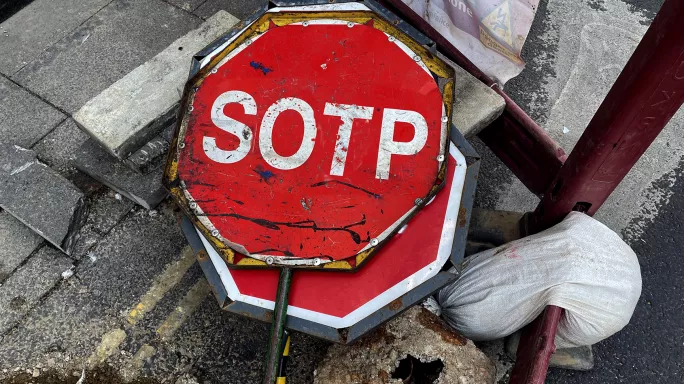- Home
- Teaching & Learning
- General
- The error code: can embracing mistakes really boost outcomes?
The error code: can embracing mistakes really boost outcomes?

To err, we are told, is human - yet many of us take a rather dismal view of our mistakes.
At worst, we see them as a barrier to our progress - a sign that we are not cut out for the task at hand.
At best, we may see them as an inevitable but undesirable part of the learning process. We can “fail again and fail better”, but we’d do better not to fail at all.
Learning through failure
Psychologists once agreed. They advised that each time a student erred, they risked memorising the false information, and that even if you immediately corrected them, the student may confuse the right and the wrong response.
As a result, teachers were often encouraged to do everything within their power to minimise the opportunities for students’ errors and to draw attention away from them when they did occur.
“Rather than exploring errors and thinking about errors, and taking them as an opportunity for learning, they learned to avoid them,” says Janet Metcalfe, professor of psychology and neurobiology at Columbia University in New York. To deliberately encourage the mistaken responses would have seemed anathema to good pedagogical practice.
Errors lead to progress
This approach might sound like common sense, but recent research suggests it may be completely wrong.
Studies have found that students learn best when they make lots of mistakes, with benefits including improved understanding and long-term recall.
“Psychologists are now very conversant about the benefits of errors,” says Metcalfe, who has pioneered much of this work. Embracing errors may even enhance students’ creativity and emotional regulation.
That’s dependent, though, on teachers knowing how to provide the most constructive form of feedback.
Why students fail
A student’s errors occur for many reasons: it may be a fault of the educational materials, lapses in attention or a lack of effort. Even the highest-attaining student, after all, will have a bad day.
The most interesting of the new research into failures concerns filling specific gaps in the student’s knowledge. According to this research, actively encouraging the expression of mistaken assumptions or misunderstandings can provide a unique opportunity for enhanced learning.
Some of the most powerful examples come from a procedure known as the “pre-test”. The concept is exactly how it sounds: you question someone on a topic before they have studied the material.
Even though most students will have little chance of getting the right answers, research suggests the pre-test ‘primes’ their minds for greater learning, resulting in greater recall in the long term.
Pre-testing in schools
The “pre-testing effect” was first defined by Lindsey E Richland at the University of California, Irvine, and colleagues in 2009. In their first experiment, the team set some undergraduate students the task of reading and absorbing an Oliver Sacks article on achromatopsia - an unusual form of colour blindness caused by brain damage.

Half the participants were given two minutes to take a pre-test on the relevant scientific content before being given eight minutes to read the text; the rest spent the entire 10 minutes studying the text. Afterwards, the whole group had to take a comprehension test.
As you would expect, the participants’ performance on the pre-test was abysmal. With no background knowledge of the topic, the average participant answered just 5 per cent of the questions correctly. When they took the final test, however, this group performed markedly better than those who had simply studied the text - a score of 75 per cent compared to 50 per cent.
Testing and assessment
One possible explanation was that the pre-test had simply drawn the participants’ attention to the facts in the text that they would need to learn.
To account for this, Richland and colleagues repeated the experiment twice more. These times, they either italicised or emboldened key passages in the text that might appear in the final test, meaning that all the participants would be guided to the relevant information.
It made little difference: those who took the pre-test still performed better than those in the control group.
Multiple studies have replicated the pre-testing effect. Researchers have applied it to the memorisation of general knowledge, for example, and shown that generating a wrong answer, followed by a correction, was far more effective than simply reading the question alongside the right answer.
Once again, this suggested that there was something about the very act of erring that enhances our memory as soon as we receive the right information.
Purposeful errors
The pre-testing effect may now be well established, but its cause is still a matter of debate. One possible explanation is that the process of actively generating an answer - be it right or wrong - renders the relevant memory traces more malleable and susceptible to feedback, so that the correct information sticks more easily.
Simply reading the same material does not activate these networks so strongly.
Another explanation is that it triggers curiosity: once students have guessed an answer, they are invested in finding out whether or not it is true.
You might expect a student’s errors to be far harder to correct when they have high confidence in their initial answer. Surprisingly, however, the research shows that the opposite is true. People learn even better when they are especially convinced of their first guess - a phenomenon known as the “hypercorrection effect”.
This might be down to the element of surprise or even embarrassment.
Theory of mind
Metcalfe says this is evident in brain scans charting the neural activity behind the learning process. Students show more pronounced activity in the anterior cingulate cortex, which reflects their confounded expectations, alongside a response in the temporoparietal junction. This region is important for “theory of mind” - the ability to predict what others believe.
In this case, Metcalfe says, it’s registering that “what I think is in conflict with what the rest of the world thinks” - and the result is better learning.
Whatever the reason, this phenomenon appears to emerge at a young age.
“We’ve seen hypercorrection with children who are in grade three [eight to nine years old],” Metcalfe says.
In none of these cases are the students creating a mistake on purpose, when they already know the right answer - an idea that may seem particularly ludicrous. According to a series of recent papers, however, deliberately erring can enhance learning - a phenomenon they call the “derring effect”.
Asking students to make mistakes
The phenomenon is the brainchild of Sarah Shi Hui Wong and Stephen Wee Hun Lim, of the National University of Singapore. They first asked some students to examine a text outlining a series of concepts from neuroscience. In some trials, the participants were asked to copy out the correct definitions of the terms; in others, they were told to first insert an error into their description before immediately correcting it.
When tested later, these students could recall about twice as many details of what they had studied.
Wong and Lim’s later studies revealed that deliberately erring was considerably more effective than other forms of active learning, such as rewriting the definitions in their own language or providing illustrative examples of each concept.
Understanding the text
Crucially, the enhanced recall is accompanied by deeper understanding. Participants who had applied the technique to the study of volcanoes, for instance, were better able to analyse a news story about the 1980 eruption of Mount St Helens and to describe its geographical formation based on a few scant details within the piece.

Students learning about immunology, meanwhile, were better able to assess a report about a boy suffering from a life-threatening allergic reaction.
And a student’s errors can even fuel their creativity, as the Harvard psychologist Ellen Langer describes in her book On Becoming an Artist.
Creativity in education
Her team of researchers first gave participants some pens and paper and asked them to draw a picture of an animal. In some trials, the participants were left completely to their own devices. In others, the researchers waited until the participant had already begun their task, before telling them that they’d started to draw the “wrong” species.
When someone had just started to depict a bear, for example, one of the researchers would lean in and ask them to draw a creature that lives in the water.
Rather than start again, however, they were asked to incorporate their initial error into the new picture.
The initial mistake could have easily prompted feelings of frustration, draining the participants’ pleasure from the artistic process, yet Langer and her colleagues found that it enhanced their enjoyment. It also appeared to improve the quality of their artistic efforts, with independent judges giving higher ratings to these pictures.
Essay outcomes
To test the effect in another domain, Langer and her colleagues asked a group of participants to begin writing an essay on “mourning”. The instructions were spoken aloud, meaning that many participants heard the word “morning” and began writing about the first few hours of the day, rather than grief - a misunderstanding that was only corrected halfway through the task.
Once again, they were encouraged to work around their error - and the result, according to independent judges, was considerably better quality writing, compared with the essays of those who had not made the mistake.
“When we all act according to the same plan, our final products are likely to look the same, just as machine-made rugs do,” wrote Langer. “Our ‘errors’, by contrast, stand a chance to be both unique and interesting.”
The downside of failure
As powerful as all these discoveries are, more research is needed and the scientists have some caveats about applying error theories in the classroom.
Metcalfe points out that learning from error requires certain cognitive resources that may be a challenge for some children with learning difficulties. “If I were teaching special ed, I’d be careful,” she says.
There are also some practical challenges. Any teacher who plans to incorporate error-driven learning should be prepared to give the necessary corrective feedback. Ideally, the students should also be given a later opportunity to show off their new knowledge, says María Maraver, who has researched error-driven learning at the University of Granada in Spain.
Practising this regularly could easily amplify your workload on top of all your current responsibilities. “It can be demanding in terms of time and resources,” Maraver acknowledges.
Teacher workload
Applying error-driven learning need not be too arduous, however, if it is conducted as a group exercise. In her lectures, Maraver tries to offer quick pre-tests on the screen or blackboard, followed immediately by the right answers so that the students can correct their responses themselves.
This may not be possible for every discipline. A wrong answer to a mathematical problem may come from many erroneous assumptions, for instance. After the students have attempted to solve the problem, the teacher can demonstrate the correct method - but Metcalfe has found the benefits are often minimal.
Instead, she advises having a class discussion about the origins of their mistakes and the ways to correct them, through a kind of Socratic dialogue. “The student has to deeply understand why they made the error and what to do the next time that similar situation comes up,” Metcalfe says.
Emotional penalty?
The greatest challenge may be to persuade students to take a positive view of their perceived failures (as this study explains). Despite the recent findings, many people would prefer not to engage deeply with feedback that might reflect badly on their current abilities, even if it has the potential to improve their future performance.
“Most students are not aware of the benefits,” says Eugenia Marin-Garcia, who recently co-wrote a review paper exploring the evidence for error-driven learning.
This fear of feedback appears to be an instantiation of the “ostrich effect” - the human tendency to hide away from information that could harm our egos. Fortunately, there are ways to overcome it.
One simple strategy may be to ask students to draw on their errors to advise others. At the end of term, for instance, you might ask a class to reflect on the challenges they have faced and then provide a few recommendations for future students. Not only does this encourage a prosocial attitude, it appears to shore up feelings of self-efficacy.
Learning to fail
Teaching students about this new research and demonstrating the upside of errors may help to shift their attitudes. Our mindsets are malleable, after all, and explaining the many ways that our mistakes can powerfully enhance memory and creativity should undercut the stigma of a wrong answer, so that they are more open-minded about negative feedback.
“We can explain to students that if you don’t encounter any errors, then you are probably not learning so deeply,” Marin says. Providing opportunities for them to experience phenomena like the pre-testing and the derring effects should only reinforce this message that their mistakes are opportunities for future progress.
“If you already knew everything, there would be no potential for growth,” says Metcalfe. Student or teacher, that’s a valuable life lesson that we could all surely embrace.
David Robson is an award-winning science writer. His latest book The Laws of Connection: 13 Social Strategies That Will Transform Your Life (Canongate) is out now
For the latest research, pedagogy and classroom advice, sign up for our weekly Teaching Essentials newsletter
Register with Tes and you can read two free articles every month plus you'll have access to our range of award-winning newsletters.



